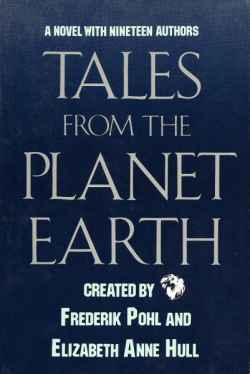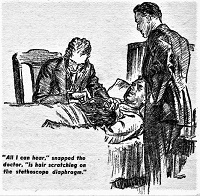
Science fiction fandom or SF fandom is a community or fandom of people interested in science fiction in contact with one another based upon that interest. SF fandom has a life of its own, but not much in the way of formal organization.

Sam Thore Jerrie Lundwall, published as Sam J. Lundwall, is a Swedish science fiction writer, translator, publisher and singer. He translated a number of science-fiction-related articles and works from Swedish into English.
A nova is an exploding star.

The Magazine of Fantasy & Science Fiction is a U.S. fantasy and science-fiction magazine, first published in 1949 by Mystery House, a subsidiary of Lawrence Spivak's Mercury Press. Editors Anthony Boucher and J. Francis McComas had approached Spivak in the mid-1940s about creating a fantasy companion to Spivak's existing mystery title, Ellery Queen's Mystery Magazine. The first issue was titled The Magazine of Fantasy, but the decision was quickly made to include science fiction as well as fantasy, and the title was changed correspondingly with the second issue. F&SF was quite different in presentation from the existing science-fiction magazines of the day, most of which were in pulp format: it had no interior illustrations, no letter column, and text in a single-column format, which in the opinion of science-fiction historian Mike Ashley "set F&SF apart, giving it the air and authority of a superior magazine".

The Encyclopedia of Fantasy is a 1997 reference work concerning fantasy fiction, edited by John Clute and John Grant. Other contributors include Mike Ashley, Neil Gaiman, Diana Wynne Jones, David Langford, Sam J. Lundwall, Michael Scott Rohan, Brian Stableford and Lisa Tuttle.
Häpna! was a Swedish science fiction magazine published between March 1954 and 1969 by Grafiska Förlaget Kindberg & Söner AB in Jönköping. The first issue of the magazine was subtitled Science Fiction Tidsdrift, but it was changed to Science Fiction Teknishka Aventyr by the second issue.
The Wish Machine, also called Stalker, is a screenplay by Arkady and Boris Strugatsky for the 1979 movie Stalker that in turn is based on the fourth chapter of their 1972 novel Roadside Picnic, published in Avrora issues 7–9.
Tuckerization is the act of using a person's name in an original story as an in-joke. The term is derived from Wilson Tucker, a pioneering American science fiction writer, fan and fanzine editor, who made a practice of using his friends' names for minor characters in his stories. For example, Tucker named a character after Lee Hoffman in his novel The Long Loud Silence, and after Walt Willis in Wild Talent.
Alfons Freiherr von Czibulka, or Alfons Cibulka was a Czech-Austrian writer and painter.
Bertil Mårtensson was a Swedish author of science fiction, crime fiction and fantasy and also an academic philosopher. He was assistant professor at Umeå University, where he was also chair of the department from 1988–93, and at Lund University.

Science-Fiction Plus was an American science fiction magazine published by Hugo Gernsback for seven issues in 1953. In 1926, Gernsback had launched Amazing Stories, the first science fiction magazine, but he had not been involved in the genre since 1936, when he sold Wonder Stories. Science-Fiction Plus was initially in slick format, meaning that it was large-size and printed on glossy paper. Gernsback had always believed in the educational power of science fiction, and he continued to advocate his views in the new magazine's editorials. The managing editor, Sam Moskowitz, had been a reader of the early pulp magazines, and published many writers who had been popular before World War II, such as Raymond Z. Gallun, Eando Binder, and Harry Bates. Combined with Gernsback's earnest editorials, the use of these early writers gave the magazine an anachronistic feel.
SFera is a science fiction society from Zagreb, Croatia. It was founded in 1976, thus marking the beginnings of organised science fiction fandom in the region.

Tales from the Planet Earth is a 1986 anthology of science fiction stories edited by Frederik Pohl and Elizabeth Anne Hull It presents 19 stories, sharing a common background developed by Pohl and Hull, by 18 authors from 18 different countries; each author's story is set in his native country, plus one extra story by Pohl. According to its cover, it contains stories about aliens which came to "occupy our bodies and inhabit our souls" and they "must find humans capable of hosting personalities and thoughts transmitted across the cosmos".
Sigma Terra Corps, Sigma TC, is a Swedish science fiction club, founded 5 December 1976 in Saltsjöbaden by Wolf von Witting, Jörg Litschke and Johan Richter.

Fantasy was a British pulp science fiction magazine which published three issues in London between 1938 and 1939. The editor was T. Stanhope Sprigg; when the war started, he enlisted in the RAF and the magazine was closed down. The publisher, George Newnes Ltd, paid respectable rates, and as a result Sprigg was able to obtain some good quality material, including stories by John Wyndham, Eric Frank Russell, and John Russell Fearn.

Twenty Houses of the Zodiac(1979) was an English-language anthology of twenty selected international science fiction short stories for the 37th World Science Fiction Convention. It was edited by Maxim Jakubowski and published by New English Library. It contained stories from an international selection of authors, some who had never had their work translated into English before. Most of the works are unique to the collection and were never previously printed or later reprinted.

"Hyperpilosity" is a science fiction story by American writer L. Sprague de Camp. It was first published in the magazine Astounding Stories for April, 1938, and first appeared in book form in the de Camp collection The Wheels of If and Other Science Fiction (Shasta, 1949; It later appeared in the anthologies Omnibus of Science Fiction, Science Fiction of the Thirties, The Edward De Bono Science Fiction Collection, and The Road to Science Fiction #2: From Wells to Heinlein, as well as the magazine Fantastic Story Magazine and the de Camp collection The Best of L. Sprague de Camp. In 2014 the story was shortlisted for the Retro Hugo Award for Best Short Story.

Captain Future was a science fiction pulp magazine launched in 1940 by Better Publications, and edited initially by Mort Weisinger. It featured the adventures of Captain Future, a super-scientist whose real name was Curt Newton, in every issue. All but two of the novels in the magazine were written by Edmond Hamilton; the other two were by Joseph Samachson. The magazine also published other stories that had nothing to do with the title character, including Fredric Brown's first science fiction sale, "Not Yet the End". Captain Future published unabashed space opera, and was, in the words of science fiction historian Mike Ashley, "perhaps the most juvenile" of the science fiction pulps to appear in the early years of World War II. Wartime paper shortages eventually led to the magazine's cancellation: the last issue was dated Spring 1944.
The Penguin World Omnibus of Science Fiction is an anthology edited by Brian W. Aldiss and Sam J. Lundwall published in 1986.










